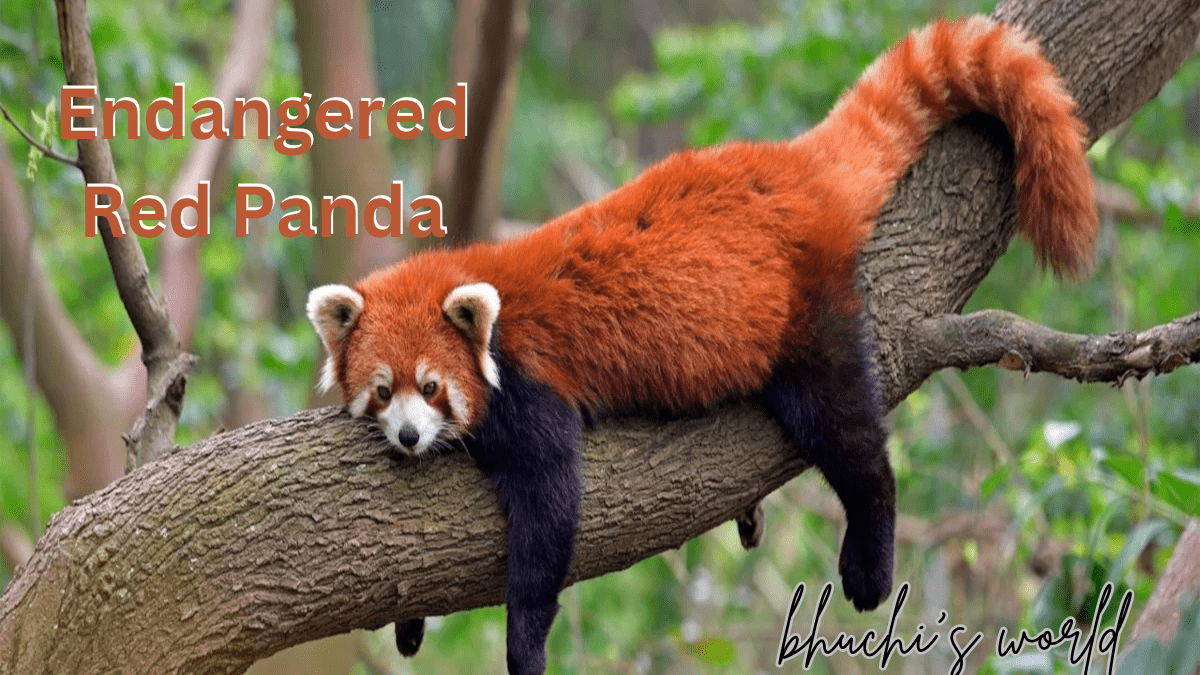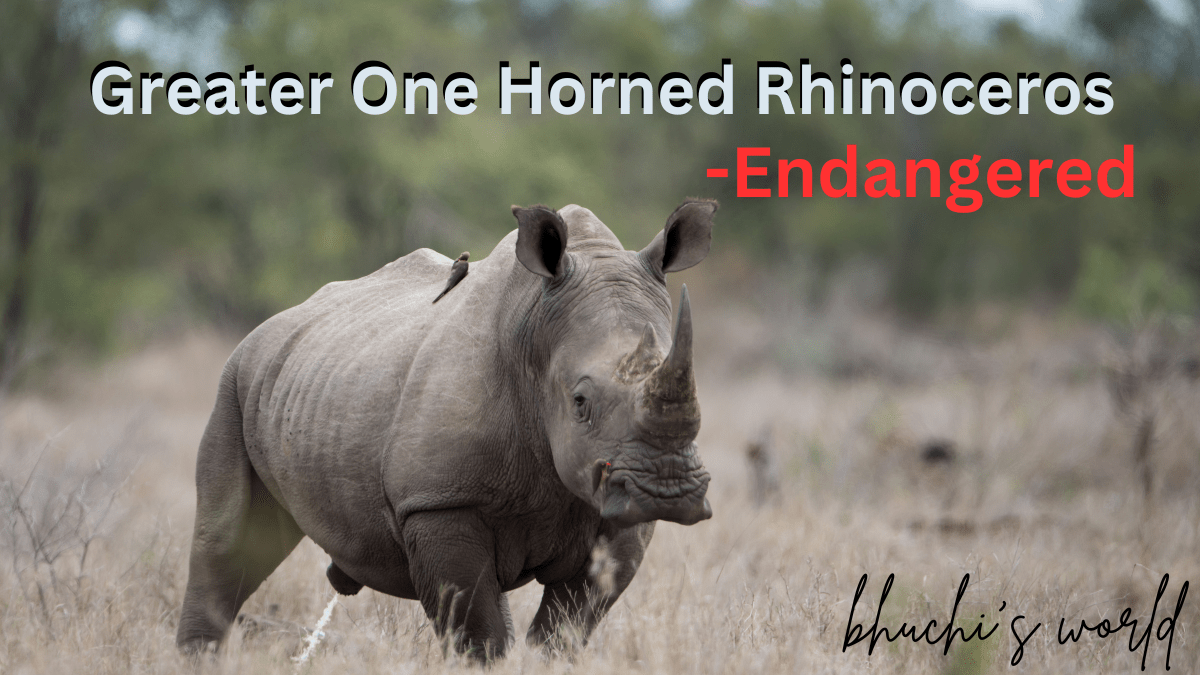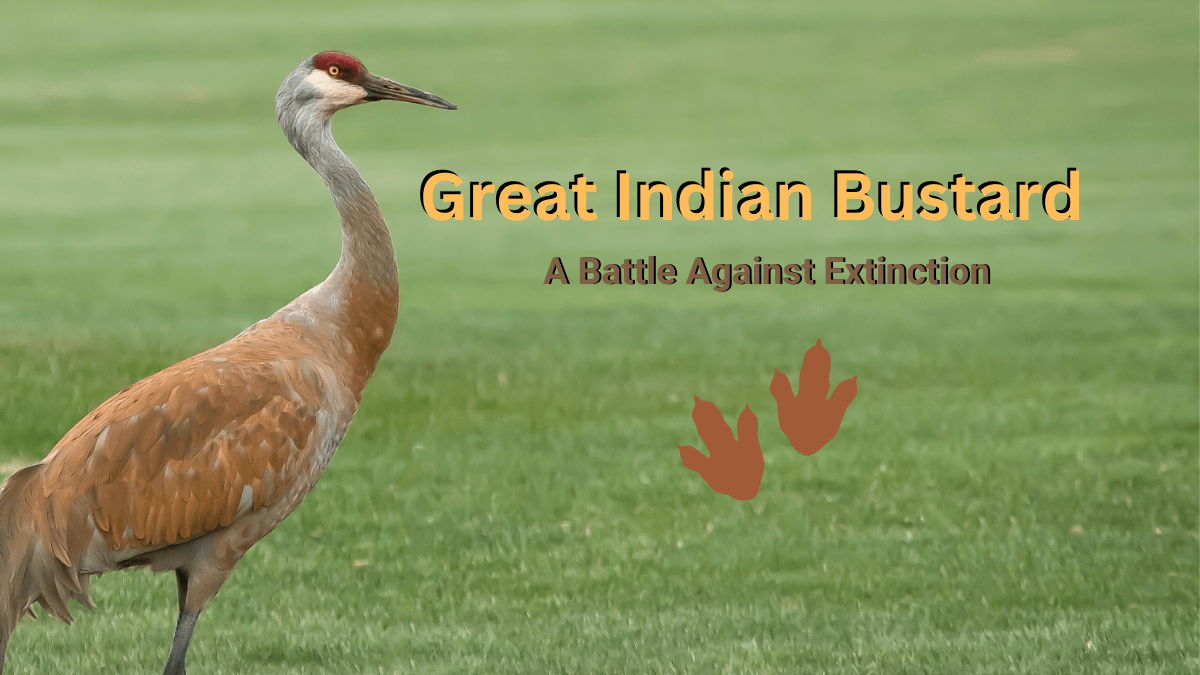The Endangered Red Panda
Despite being a charming and elusive animal, the big panda frequently eclipses the red panda. The red panda (Ailurus fulgens), a unique animal that has won over many hearts, is native to the temperate forests of the Himalayas and southwest China. With an estimated population of less than 10,000 individuals left in the wild, the red panda is considered endangered despite its cuteness and charm.
Red panda habitat loss from poaching, habitat fragmentation, and deforestation are the main threats to the species. These cute creatures are losing their native habitats, which are essential to their existence, as human activity increases. Their primary food source, bamboo forests, are being cut down for urbanization and cultivation. Because red pandas are targeted for their gorgeous fur and captured for the exotic pet trade, illegal hunting also presents a serious threat.
Red pandas and their habitats are being protected through conservation initiatives. Groups like the Red Panda Network are putting a lot of effort into educating the public and encouraging sustainable practices in their areas. The survival of this species depends on programs like habitat restoration, anti-poaching patrols, and community-based reforestation.
The survival of the red panda depends on public awareness. We may support conservation efforts by educating ourselves and others about the predicament of this fascinating animal. Protecting their ecosystems can also be facilitated by promoting responsible tourism and wildlife reserves.
By working together, we can make sure that the red panda's natural beauty is preserved for future generations. Now is the moment to take action; let's strive for a future in which red pandas can flourish once more.
Help save the red panda! Support conservation efforts and spread the word. Learn more at bhuchisworld!
#bhuchisworld
https://shorturl.at/J0rTx


@Bhuchis
The Greater One Horned Rhinoceros
One of the most recognizable animals in the world, the Greater One-Horned Rhinoceros (Rhinoceros unicornis) is mostly found in the wetlands and grasslands of northeastern India and Nepal. Known by many as the Indian rhinoceros, this amazing animal is distinguished by its unique solitary horn, which may reach a length of 25 inches.
The largest rhinoceros species, the Greater One-Horned Rhinoceros, is distinguished by its enormous size, weighing between 1,800 and 2,700 kg (4,000 and 6,000 lbs). Its thick, folded skin offers protection as well as a distinctive armor-like appearance. The rhino's coloring is gray to brown, and it frequently appears lighter when it is covered in water or dirt.
These rhinos mostly eat grasses, leaves, and fruits because they are herbivores. They play a vital role in the ecosystem by preserving the grassland environment, which is home to a variety of animals. Because of the high value of its horns in traditional medicine and as status symbols, poaching and habitat degradation are unfortunately threats to the Greater One-Horned Rhinoceros.
In protected regions like India's Kaziranga National Park, where effective anti-poaching measures have resulted in a notable rise in their population, conservation activities have been implemented. Campaigns to raise awareness are also essential in transforming attitudes toward these amazing creatures and their significance to biodiversity.
The Greater One-Horned Rhinoceros's protection is crucial for both the species and the ecology in which it lives. It serves as a reminder of the interdependence of all living things and the value of protecting the natural legacy of our planet, serving as a symbol for wildlife conservation.
Help protect the Greater One-Horned Rhinoceros! Join us at bhuchisworld and make a difference today!
# Bhuchisworld
https://shorturl.at/uegNA
Great Indian Bustard
One of India's most recognizable birds, the Great Indian Bustard (Ardeotis nigriceps), is prized for its magnificent size and distinctive beauty. This bird, which is distinguished by its long legs, graceful neck, and eye-catching plumage, is a representation of the nation's abundant biodiversity. Once common in several states, such as Rajasthan, Gujarat, and Maharashtra, the Great Indian Bustard is now in grave risk of extinction as a result of habitat loss and human activity.
Mostly found in desert grasslands and scrublands, the bustard depends on open areas for both nesting and foraging. Its primary food sources include insects, grass seeds, and tiny vertebrates, demonstrating its capacity to adapt to the hostile conditions of the Indian subcontinent. However, its native habitat has been destroyed as a result of the quick development of infrastructure, urbanization, and agriculture. The bird is now in danger of going extinct as a result of this, hunting, and poaching.
The Great Indian Bustard is being protected through conservation initiatives. To establish safe habitats and increase awareness of this amazing bird, organizations and wildlife enthusiasts are putting forth endless effort. The survival of this species depends on programs including habitat restoration, anti-poaching efforts, and community engagement. Furthermore, the creation of national parks and protected regions has offered some solace, but more all-encompassing approaches are required.
The Great Indian Bustard is an essential component of India's ecological legacy and more than just a bird. Its ecosystem's fragile balance must be maintained in order to be protected. We must keep in mind that the destiny of this amazing bird is a reflection of our dedication to conservation and biodiversity as we work to conserve it. In order to ensure that the Great Indian Bustard has a future and that future generations can appreciate its majesty in the wild, every effort matters.
Help save the Great Indian Bustard! Visit bhuchisworld to find out how you can make a difference. Every effort matters!
#greatindianbustard
https://shorturl.at/8w62b
The Ganges River Dolphin
The Ganges, Brahmaputra, and Meghna river systems are the only freshwater rivers on the Indian subcontinent where the remarkable Ganges River dolphin (Platanista gangetica) can be found. This dolphin, one of the most endangered species in the world, is essential to preserving the wellbeing of its aquatic environment.
Ganges river dolphins have a number of unique characteristics that set them apart from their saltwater counterparts. Their strong, lengthy bodies and long snouts, which are packed with many conical teeth, make them perfect for snagging slippery fish. Since these dolphins mostly use echolocation to navigate their muddy river habitats, their small eyes are primarily used for light detection.
Although they can be lonely, these dolphins are rather gregarious animals that are frequently spotted in small groups. They exhibit a sophisticated social structure by using a succession of clicks and whistles to communicate. The Ganges dolphin, which is frequently honored in regional mythology and considered a sign of river health, is also a culturally significant emblem in India.
Unfortunately, their survival is seriously threatened by pollution, fishing methods, and habitat degradation. While fishing nets might cause unintentional entanglement, dam and barrage construction disturbs their natural habitat. Organizations are fighting for protected areas and spreading the word about the value of protecting this rare species as part of ongoing conservation efforts.
The Ganges River dolphin is an essential component of its ecosystem in addition to being an amazing animal. The health of the rivers this species lives in and biodiversity depend on its protection. These amazing dolphins have a bright future thanks to continued conservation efforts, which serve as a reminder of the interdependence of all species and the value of protecting the environment.
Support the Ganges River dolphin! Visit Bhuchi's World to learn how you can help protect this amazing species and its habitat.
#thegangesriverdolphin
https://shorturl.at/GveMr
Snow Leopard
Found in the untamed high-altitude peaks of Central and South Asia, the snow leopard—often referred to as the "ghost of the mountains"—is a rare and elusive large cat. This gorgeous mammal, which is well-known for its thick, spotted fur and breathtaking beauty, has evolved to thrive in some of the harshest settings on the planet. Usually located between 3,000 and 5,500 meters above sea level, where temperatures decrease and oxygen levels are low, snow leopards thrive, proving their adaptability and resilience.
The snow leopard's coat, which is pale gray with rosette-like markings that mix in well with the rocky, snow-covered landscape, is one of its most striking characteristics. Hunting and avoiding dangers in the outdoors both depend on this natural camouflage. In addition to being thick, the leopard's fur has an insulating layer that helps it survive the chilly alpine conditions. For added warmth on chilly evenings, it also encircles itself with its long, bushy tail, which it uses as a blanket.
Snow leopards are powerful but stealthy hunters, feeding on mountain-dwelling prey such as ibex, bharal, and other herbivores. However, due to human encroachment, these cats often face challenges in finding food, leading to occasional livestock attacks. Consequently, snow leopards are vulnerable, with fewer than 7,000 individuals estimated to be left in the wild.
Snow leopards are being protected through conservation initiatives that include habitat preservation, anti-poaching measures, and community cooperation to lessen conflicts between people and wildlife. We can guarantee the survival of these enigmatic and elegant predators and protect an important portion of the natural history of our planet by increasing awareness and encouraging a sense of shared responsibility.
Help protect snow leopards. Join us at Bhuchisworld!
#snowleopard
https://shorturl.at/rX0VS



